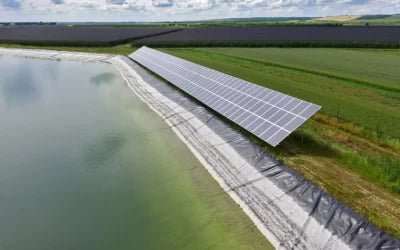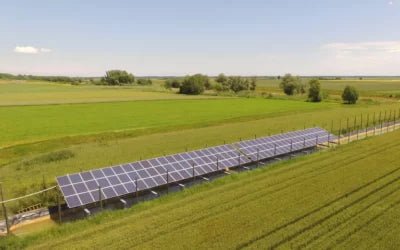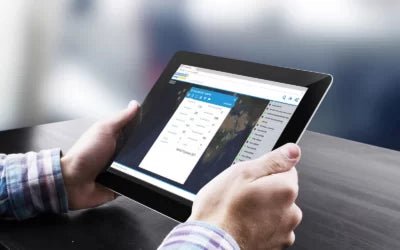Australia is a vast continent with a variable climate, and droughts are not uncommon in many regions. During these periods of water scarcity, farmers often rely on dams, which are man-made water storage reservoirs, to collect and store rainwater runoff for later use. The stored water can then be pumped using solar-powered pumps to irrigate crops or provide drinking water for livestock.
Using dams as a water source can be a practical and cost-effective solution for farmers who do not have access to other sources of water or electricity. Additionally, it can help to reduce the reliance on groundwater sources, which are often overused and can lead to the depletion of the water table.
In this article, we will explore the benefits of using solar pumps that pump water from a dam as a water source, their features, and how they can be used to provide clean and reliable water to communities in remote areas.
Choosing a water source for your solar pump
There are a number of water sources used in a solar water pump system which includes (but not limited to):

Dams
A solar pump can be used to pump water from a dam which we will further explore in this article.
Rivers and creeks
Solar pumps can also be used to pump water from rivers and creeks. In this case, a surface pump or submersible pump can be used to draws water from the source.
Boreholes and wells
Solar pumps can be used to extract water from boreholes and wells. A submersible pump is placed in the borehole or well, and it is connected to a solar panel and a controller on the surface. The pump draws water from the underground source and pumps it to the surface.
Why choose a dam as a water source?
In many cases, a dam is not a water source option for many farmers and station owners, however when a dam is available, it’s often a great choice for several reasons:
Reliability
Dams provide a reliable source of water, especially during periods of drought when other water sources may be scarce or unreliable. By collecting and storing rainwater, farmers can ensure a constant supply of water for their crops and livestock.
Cost-effective
Using dams as a water source can be a cost-effective solution for farmers, particularly those in remote areas needing to store large volumes of water.
Environmental benefits
By collecting and storing rainwater, dams can help to reduce the impact of droughts on the local environment. They can also help to reduce the demand for groundwater, which is often overused in many regions and can lead to the depletion of the water table.
Improved water quality
Dams can help to improve the quality of water used for irrigation or watering livestock. By storing rainwater, the water is naturally filtered, reducing the need for additional treatment before use.
Solar Pumps work great as a solution to pump water for dams. We’ll look at instances where they are the best solution for you.
When to consider using a solar pump and dam?
Solar pumps are a great choice for pumping water from dams to irrigate crops or water livestock when any of the following is true:

You are in a remote location
If your water source, in this case the dam, is located far away from the nearest electrical grid, it can be expensive and impractical to run power lines to the location. In such cases, a solar pump can be an excellent option because it doesn’t require a connection to the electrical grid. Solar pumps are also typically cheaper to operate than other remote options such as diesel and petrol pumps.
You have limited access to electricity
If the area where the water source is located experiences frequent power outages or has limited access to electricity, a solar pump can be a reliable and cost-effective option to pump water.
You are looking to reduce your carbon footprint
Solar pumps are environmentally-friendly and sustainable, making them a good choice for those who want to reduce their carbon footprint and promote sustainable practices.
You want to increase yield
Once a solar pump system is installed, it has low operating costs since it relies on the energy from the sun, which is free. This makes it an attractive option for those who want to keep their pumping costs low.
Overall, if you need to pump water from a dam to irrigate crops or water livestock, and any of the above points are true in your situation, a solar pump is well worth considering. For those wanting to pump water around the clock, you can also consider a hybrid solar pump which provides the best of both worlds.
How to choose the right solar pump for your dam
Choosing the right solar pump to transport water from a dam to your desired location is a critical decision for any farmer or landowner. Solar pumps offer a reliable and cost-effective solution for irrigating large areas of land, but selecting the right pump for your needs can be overwhelming. There are a few key factors to consider before investing in a solar pump to pump water from a dam. These include:
Water Source and Depth
You need to confirm the type of water source, such as a dam, river, borehole or well, and the volume of water you need to pump. This will help you select the appropriate pump size and solar panel capacity to meet your water requirements. The depth of water can also help you decide whether you need a surface or submersible pump.
Water Usage
You need to estimate how much water you will need to use for your specific application, such as irrigation or livestock watering. This will help you determine the flow rate and the size of the storage tank, if needed.
Lift and Distance
You need to calculate the total lift and distance the water needs to be pumped, which will help you determine the required pump size and the capacity of the solar panel.
Sun Exposure
You need to evaluate the amount of sunlight the location where the solar pump will be installed receives and select a solar panel size that can generate enough power to meet the pump’s energy requirements. In addition, you need to consider any shading or obstructions that may impact the solar panel’s performance.
Budget
Determine your budget for the solar pump system, including the pump, solar panel, controller, and any additional components such as storage tanks or controllers. You should also consider the maintenance and installation costs.
System Design
You need to determine the most suitable system design for your specific application, including the type of pump, the type of solar panel, and any additional components such as batteries or controllers.
By considering these factors, you can select a solar pump system that is tailored to your specific needs, and that can provide reliable and sustainable water pumping for years to come.
Installing the solar pump system
Unless you are a qualified technician, or you are just looking to implement a small solar pump system (in which case, we would recommend our portable, all-in-one LORENTZ “S” solar pump kit), we recommend that you engage a professional.
LORENTZ has a network of installation partners across Australia who also stock and sell our systems. Ultimately, you are best to find your closest dealer and present your situation to them so they can provide you with the best possible advice for your specific situation.
Considering they have installed hundreds of systems, they can advise the best system for your requirement and ensure it is installed and operating as expected.

Summary
Solar pumps are a cost effective, environmentally sustainable way to pump water from a water source such as a dam to irrigate crops and water livestock.
They are cost-effective, efficient and reliable, and they help eliminate the environmental impact of pumping water as seen with diesel and petrol pumps. When selecting a solar pump, it is important to consider factors such as water source, access to the grid, short and long-term goals as well as speaking to your local dealer for expert advice on the best system for you.









